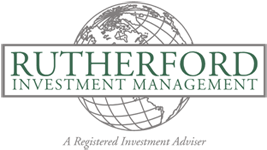Originally posted in the Daily Journal of Commerce, Portland OR
Published November 12, 2013

highs.
Worries abound over the elevated market levels. This is good, because if there were not worries, we should be worried. If there were no worries in the market, an investor could conclude that we were on the verge of exuberance, which would be a worry. It is good for the market’s balance if investors are concerned.
However, just now the S&P is trading at 18.7 times trailing earnings and 15.93 times projected earnings. Against a historical backdrop of a 15.50 mean earnings, the market is fully valued, but not worryingly so. Still, valuations support increased exposure to emerging markets and foreign developed markets, and a slight reduction in exposure to the U.S. The markets have been fueled by profit gains, but also cheap money. The Fed has kept interest rates low and bond purchases high in order to support the economy and prevent deflation like the kind that racked Japan for 20 years and is creeping into Europe.
The latest numbers out of Europe show that dangerously low inflation is threatening Europe. In the eurozone, the annual inflation rate in October pulled back to 0.7 percent.
Because Congress and the president have failed at fiscal policy, the Fed has found it necessary to support the economy with monetary policy as best it can. As a student of the Great Depression, Ben Bernanke does not want to see us fall into deflation. With fiscal policy a nightmare, the Federal Open Market Committee found it prudent to continue buying bonds.
The Fed wants unemployment reduced; however, government policies, particularly Obamacare, are working against rising employment. The principal reason that unemployment is declining is reduced participation in the workforce – discouraged people are dropping out. Recent polls show that employers with 50-999 employees indicate that government policies, particularly Obamacare, will reduce hiring into the near term. Not only will hiring be reduced, but the number of hours worked will be reduced too, all in an effort to skirt the requirements of Obamacare.
Investors now turn to the last two months of the year. Can we have a correction after such a steep rise? Through Sept. 30 of this year, the market followed its 55 percent correction in 2007-08 with an increase of 174 percent from the market bottom, which is 23 percent above the prerecession high. Many people pulled to the sidelines after the correction, some failed to come back, and many have adopted an ultra-conservative strategy. They have all suffered. Fixed income has had a particularly difficult year.
Those who have heeded our advice to reduce exposure to fixed income and increase their exposure to U.S. equities have benefited. In the trailing 12 months ending Sept. 30, U.S. equities have returned 19.1 percent, compared to 31-32 percent for France, Japan and Switzerland, and 26 percent for Germany.
As attention turns to the last two months of the year, and with concerns over a “bubble,” we can look to history for a guide. Past performance is no indication of future success, but we have had similar circumstances before.
Historically, the period from November to May is the best period of the year for the markets. In the past 40 years, the final two months of the year have seen the S&P rise 26 times, drop seven times and stay flat seven times. In other words, more than three quarters of the time the market was flat to up in the final two months of the year.
So far this year, 451 of the 500 stocks in the S&P were up. This makes it different from 1999, when fewer than half of the S&P stocks were up, even though the index jumped 19.5 percent. The highest number of ups was in 2003, when 458 stocks finished the year up.
When the market has risen at least 10 percent in the first 10 months of the year (it has happened 33 times), it has gone on to rise more in all but five of those periods. In 1997, the market rose 23.5 percent in the first 10 months – nearly the same as this year. The market went on rise 6.1 percent in the final two months.
Noted independent economist Ed Yardeni predicts that the S&P will reach 2,014 next year. The S&P stood at 1,762 on Nov. 1.
With the Institute for Supply Management index up to its highest level since April 2011, with auto sales strong, and with the price of oil dropping, there should be additional support for the markets. The strongest sectors through Sept. 30 have been consumer discretionary, financials, health care and industrials. As always, we recommend a diversified portfolio, including international exposure.
